
We’ve spent a great deal of time on this blog discussing the importance of having high-quality, SEO-optimized content on your website. Rich, valuable content has the power not only to attract users to your site but also to resonate emotionally with potential customers — generating leads for your HVAC, home performance or solar business.
This may have you thinking that when it comes to content, more is always better. However, if your website is jam-packed with hard-to-read content, people are going to leave your website before you can say “energy audit.”

Who is going to read all of this?
Enter: White Space
“White space” refers to any unused area on your website — whether it’s white or not. It may be that space between paragraphs of text, between your text and images, between your service area map and the contact form, etc. If it’s an area that doesn’t distract the user from other elements on the page, chances are it’s white space.
All of this empty space may seem useless, but it does much more for your website than you may think. White space gives your website “breathing room,” making it easily digestible and simple to navigate.
Here are five unexpected benefits that white space can offer your company’s website.
1. Drives Attention to Important Elements
White space tells visitors what the most important elements on your website are — whether that’s a contact form, phone number, or video about one of your services. If you want site visitors to call you or fill out that contact form, you need to incorporate ample white space in your web design.
Take Google’s homepage, for example:
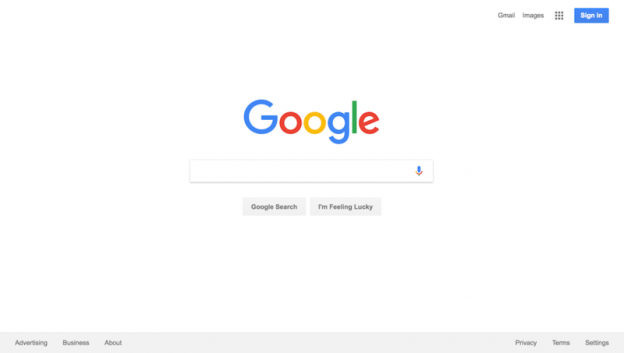
No one asks when getting to Google’s homepage where they should type in their search query.
2. Makes Content Easy to Digest
Strong, emotionally-driven content is highly effective in drawing in potential customers and generating leads for business; but if that content is difficult to read, you aren’t going to see those benefits.
To get the most from the content you’re producing, make sure your website has ample white space. Carefully planned space between paragraphs and around blocks of text helps people more easily digest the content they are reading, making for a better overall user experience.
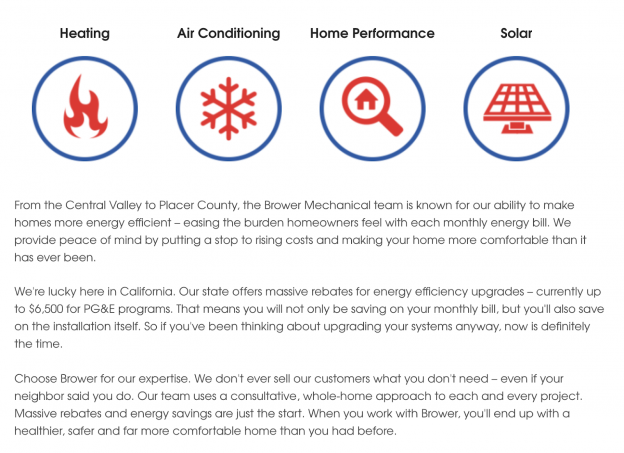
Ah, the “meat” of Brower Mechanical’s homepage. Thanks to short paragraphs and breathing room between those paragraphs, this content is easy to read.
3. Gives Your Website Structure
You may think of white space as simply that space that is left over after placing web design elements where you want them on a page. However, white space can actually play a central role in giving your site structure. As a natural separator, it can set unrelated elements apart and lead the user’s eyes down the page.
Rather than filling your site with lines, arrows, and other graphical elements in an attempt to create hierarchy, let white space create structure and flow on your site.
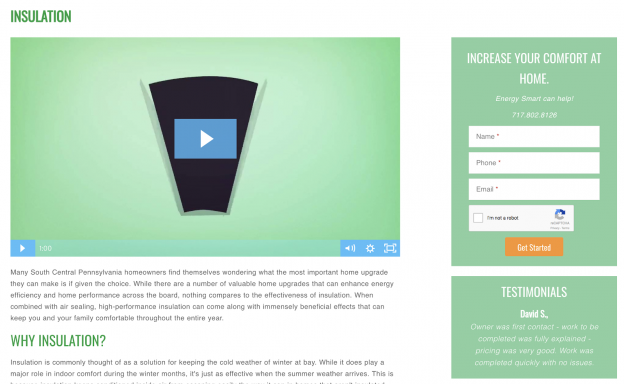
On this page about insulation, white space makes it easy to differentiate text from other interactive page elements.
4. Optimizes Your Website for Multiple Screen Sizes
You’ve probably heard by now that your website needs to be adaptable to multiple devices, including phones, tablets, desktops, and TV monitors. What you may not know is that white space plays a key role in optimizing site readability for varying screen sizes.
When viewing this website on a desktop, for example, white space to the left and right of the text keeps the text easy to read:
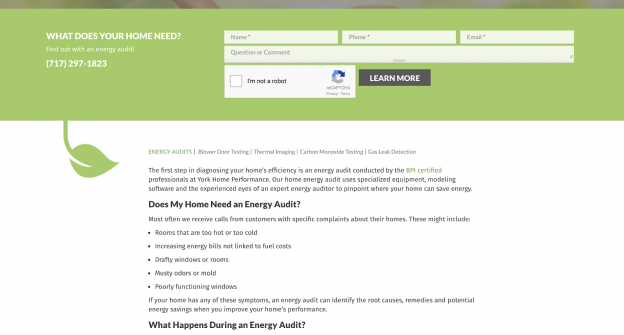
When viewing the same website on mobile, you’ll notice less white space on either side of the text. The text is still easy to read thanks to paragraph spacing:
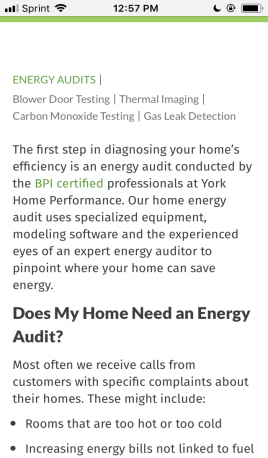
5. Boosts Your Overall First Impression
According to one study conducted at Carleton University in Ottawa, a website has just 50 milliseconds to make a good first impression on users. That’s 0.05 seconds.

This homepage is a little crowded.
If you want to present a clean image to potential customers who visit your site, your website must incorporate white space as a central design element. White space naturally separates elements within a design and creates the breathing room your site needs for a clean look.
How Much White Space Should My Website Have?
An effective website strikes a delicate balance between having rich content and having plenty of white space to give that content breathing room. Too little white space, and your website is going to be hard to navigate; too much white space, and your website won’t offer much value.
If your site seems off-balance with either too much or too little white space, now is the time to reassess your site’s design.